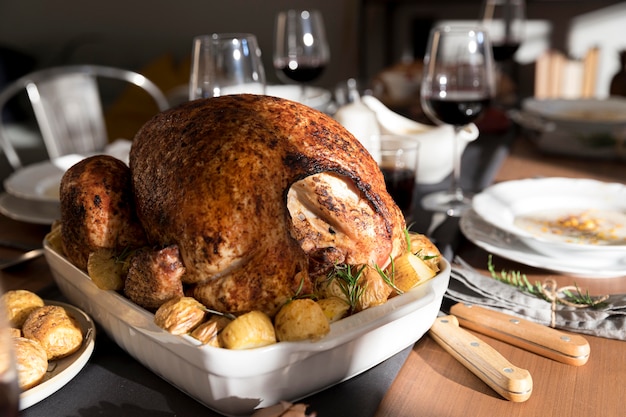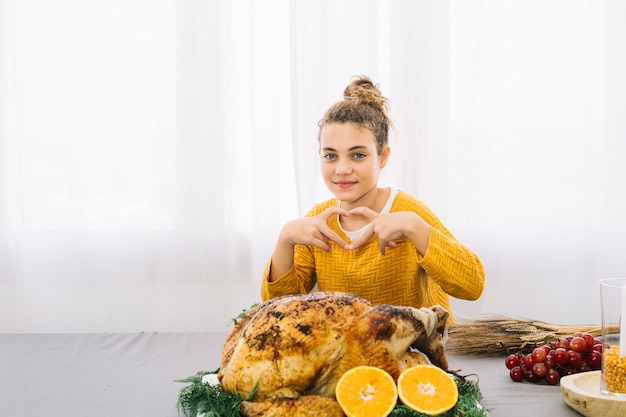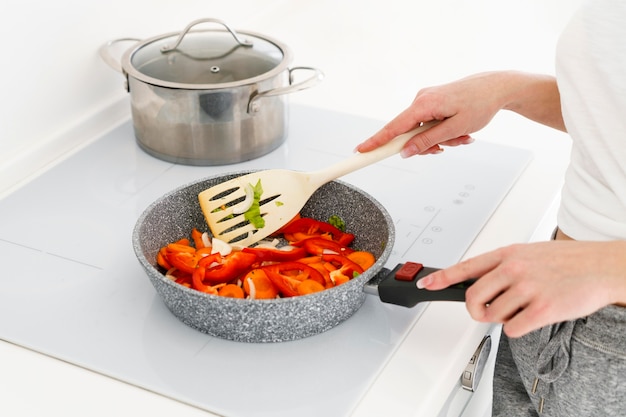Alright, let's talk chicken breasts. You know, those lean, versatile cuts of poultry that are perfect for everything from weeknight dinners to fancy feasts? But here's the thing: getting them perfectly cooked can be tricky. No one wants dry, overcooked chicken, right? I've been there – countless times! I've had my share of dry, disappointing chicken dinners. But over the years, I've learned a thing or two about how to get those chicken breasts juicy and flavorful every time. It's all about mastering the oven, understanding the different cooking times, and adding a little bit of magic with seasoning and techniques.
(Part 1) The Essentials: Temperature, Time, and the Oven's Power

First things first, let's talk about the heart of this whole operation: the oven. It's like a magic box that transforms raw chicken into a delicious meal. But to make it work its magic, we need to understand its power – how to control the heat and cooking time.
The Golden Oven Temperature: Finding the Sweet Spot
You know how people say “too much of a good thing can be bad?” Well, that applies to oven temperature too. Too low, and the chicken takes forever to cook; too high, and it risks becoming dry and tough. I've found that 375°F (190°C) is the sweet spot. It's a nice, steady heat that cooks the chicken through without drying it out. And remember, always preheat your oven. It ensures even cooking and helps your chicken cook faster.
Chicken Breast Thickness: The Secret to Cooking Time
Okay, here's where it gets interesting: the thickness of your chicken breasts dictates how long they need to cook. Think of it like this: a thin piece of fabric dries faster than a thick one. It's the same principle with chicken. Here's a little guide to help you out:
- Thin chicken breasts (less than 1 inch thick): These are like the quick-drying fabrics. They need about 20-25 minutes in the oven to cook through.
- Medium-sized chicken breasts (1-1.5 inches thick): These are like those thicker fabrics – they'll need a bit more time to dry. They'll be perfectly cooked in around 25-30 minutes.
- Thick chicken breasts (over 1.5 inches thick): Think of these as the super-thick fabrics – they need the most time to dry. They'll take 30-35 minutes to cook.
Now, these are just guidelines, remember? It's always best to check the internal temperature of your chicken with a meat thermometer to make sure it's reached a safe 165°F (74°C). That's the real indicator of a perfectly cooked chicken breast.
(Part 2) The Art of Seasoning: Building Flavor from the Ground Up

Alright, we've got the oven ready, and we've learned about cooking time, but let's talk about flavor. This is where the magic really happens. Seasoning is your secret weapon for making even the simplest chicken breast taste incredible. It's like adding a symphony of flavors to your dish.
The Foundation: Salt and Pepper, the Dynamic Duo
You can't go wrong with salt and pepper. They are the backbone of any good seasoning. They enhance the chicken's natural flavor and create a foundation for other spices to build upon. Don't be shy with the salt! It’s a flavor enhancer, not just a seasoning.
Spice Up Your Life: Beyond the Basics
Now, let's move beyond salt and pepper. There’s a whole world of spices and herbs waiting to be explored, each adding its unique personality to your chicken. Here are some of my favorites:
- Garlic Powder: This adds a delicious savory punch to your chicken. It’s like adding a touch of warmth and richness.
- Onion Powder: Another great way to boost the savory flavor. It adds a subtle sweetness that complements the chicken beautifully.
- Paprika: Paprika adds a beautiful reddish-orange color and a hint of warmth. It also has a slightly sweet flavor that can be quite surprising.
- Cayenne Pepper: This is for those who like a little heat. It adds a kick and a fiery touch to your chicken. Start with a pinch and adjust to your spice preference.
- Herbs like Thyme, Rosemary, and Oregano: Herbs add a refreshing element and complexity to your chicken. Thyme has a slightly lemony flavor, rosemary is more earthy, and oregano has a slightly peppery note.
Creating Your Signature Blend: Unleashing Your Culinary Creativity
Don't be afraid to mix and match your spices! Get creative and experiment. Try blending different spices together to create your own unique flavor profile. You could even make a pre-mixed seasoning blend to keep on hand for those busy weeknights.
(Part 3) Mastering the Cooking Process: Tips and Tricks for Juicy Success

Okay, you've got your preheated oven, seasoned chicken, and you're ready to cook! Here are some tips and tricks to make sure your chicken comes out perfectly juicy and flavorful.
The Secret to Moist Chicken: Don't Overcook It!
Overcooked chicken is a tragedy. It becomes dry and tough, making for a disappointing meal. The key is to cook it just until it's cooked through, not a minute longer. But how do you know when it’s done?
The Game Changer: The Meat Thermometer
This is the tool that can make all the difference. A meat thermometer is an essential investment for any home cook. It takes the guesswork out of cooking chicken and ensures it’s cooked to a safe internal temperature of 165°F (74°C). Once it reaches that temperature, you know it's safe to eat.
Give Your Chicken Some Space: Avoid Overcrowding
Imagine you're crammed into a crowded room. Not the most comfortable situation, right? It's the same with chicken. If you overcrowd the baking dish, the chicken won't cook evenly, and it might take longer to reach the desired temperature. Give each chicken breast at least an inch of space around it. They’ll cook more evenly and beautifully.
(Part 4) Elevate Your Chicken Breast: Beyond the Basics
Now that you've got the fundamentals down, let's talk about taking your chicken to the next level. It's all about adding some extra flavor and moisture.
The Power of Marinades: Infusing Flavor Deeply
Marinades are like a secret weapon for making chicken more flavorful and juicy. They work by tenderizing the meat and allowing flavors to penetrate deeply. Here's how to make a simple marinade:
- Combine your favorite ingredients: The possibilities are endless! You can use oil, vinegar, soy sauce, herbs, spices, citrus juice – it's all about experimenting and finding what you like.
- Let the chicken soak: The longer you marinate the chicken, the more flavor it will absorb. A minimum of 30 minutes is ideal, but overnight is even better.
Adding Moisture: The Magic of Liquid
Adding a little liquid to your baking dish can make a big difference. It creates steam, which helps to keep the chicken moist. Water, broth, or even a splash of wine will do the trick. You can even add sliced onions or potatoes to the bottom of the pan for extra flavor and moisture.
The Foil Trick: Trapping Moisture for Juicy Results
Foil is your best friend for moist chicken! Wrapping your chicken in foil creates a steamy environment, which traps moisture and prevents it from drying out. You can bake the chicken in foil for the first part of the cooking time and then remove it for the last few minutes to allow the skin to crisp up.
(Part 5) From Oven to Table: Presenting Your Delicious Creation
The chicken is out of the oven, perfectly cooked, and now it's time to make it look as good as it tastes.
Resting: A Simple Step for Tenderness
When your chicken comes out of the oven, don't carve it right away. Let it rest for 5-10 minutes. This gives the juices time to redistribute, resulting in a more tender and flavorful chicken breast. This is a simple step that makes a big difference.
Presentation Matters: Elevate Your Chicken
A beautiful presentation can elevate any dish. Here's how to make your chicken look extra special:
- Carving: Cut the chicken breast into thin slices for a visually appealing presentation.
- Garnish: Add a touch of color and freshness with herbs, lemon wedges, or a sprinkle of toasted sesame seeds.
- Plating: Use a beautiful platter or plate to showcase your chicken.
(Part 6) Chicken Breast Variations: Explore the Possibilities
Now that you've mastered the basics, let's explore some variations that will keep your chicken dinners exciting.
The Classic: Roasted Chicken Breast with Herbs
This is a simple but delicious recipe that never fails. Season your chicken breasts with your favorite herbs, like thyme, rosemary, or oregano, and roast them in the oven until cooked through.
A Touch of Sweetness: Honey Garlic Glazed Chicken
For a sweet and savory flavor, try a honey garlic glaze. It's a crowd-pleaser that's perfect for a weeknight meal or a special occasion. Simply whisk together honey, soy sauce, garlic, and a pinch of ginger, then brush it over the chicken during the last 10-15 minutes of cooking.
Spicy and Savory: Chipotle-Lime Chicken
This recipe is for those who like a little heat. Combine chipotle peppers in adobo sauce, lime juice, garlic, and cumin for a smoky, citrusy flavor that's both bold and satisfying.
Go Mediterranean: Lemon and Herb Chicken
Transport your taste buds to the Mediterranean with this refreshing recipe. Combine lemon juice, olive oil, garlic, oregano, and a touch of salt and pepper for a bright and flavorful chicken dish.
(Part 7) Beyond the Meal: Creative Uses for Cooked Chicken
Cooked chicken is a versatile ingredient that goes way beyond a typical dinner. It's perfect for stretching your meals and creating delicious dishes that satisfy any craving.
The Ultimate Leftover Solution: chicken salad
This is a classic for a reason. Shred your cooked chicken and mix it with mayonnaise, celery, onion, and your favourite seasonings. Enjoy it on sandwiches, salads, or crackers for a quick and satisfying meal.
A Hearty Soup Base: chicken noodle soup
When you're feeling under the weather or just craving comfort food, chicken noodle soup is the perfect cure. Shred your cooked chicken and add it to a pot of broth with noodles, vegetables, and your favorite seasonings.
Pasta Perfection: chicken alfredo
This creamy and cheesy pasta dish is a crowd-pleaser. Cook your pasta, then add shredded chicken, alfredo sauce, and your favourite toppings for a delicious meal.
(Part 8) FAQs: Your chicken breast cooking Queries Answered
I know you have questions. It’s natural when you’re venturing into the world of chicken breast cooking. Let's address some common concerns and questions you might have.
1. Can I Freeze Cooked Chicken Breast?
Absolutely! Freezing cooked chicken is a great way to save time and prevent food waste. Simply let the chicken cool completely, then wrap it tightly in plastic wrap or aluminum foil and place it in a freezer-safe bag. You can freeze cooked chicken for up to 3 months. When you're ready to use it, thaw it in the refrigerator overnight.
2. How Long Should I cook chicken breast in the Oven?
The cooking time depends on the thickness of the chicken breast. Thin breasts (less than 1 inch) take about 20-25 minutes. Medium-sized breasts (1-1.5 inches) take around 25-30 minutes, and thick breasts (over 1.5 inches) need 30-35 minutes. It's always a good idea to check the internal temperature using a meat thermometer to ensure it’s cooked through to 165°F (74°C).
3. What Happens If I Overcook Chicken Breast?
overcooked chicken breasts become dry, tough, and rubbery. They lose their moisture and become unpleasant to eat. The key is to cook them until just cooked through, not a minute longer.
4. How Do I Know When Chicken Breast is Done?
The best way to know if your chicken breast is done is to use a meat thermometer. It should reach an internal temperature of 165°F (74°C). You can also check the chicken for doneness by cutting into the thickest part. The juices should run clear, not pink.
5. Can I Cook Chicken Breast with Skin On?
Yes, you can! cooking chicken breast with the skin on helps keep the meat moist and adds a delicious crispy texture. Roast it in the oven, skin side up, for a crispy and juicy chicken breast.
(Part 9) My Final Thoughts: A Journey of Culinary Discovery
So there you have it! My comprehensive guide to oven-baked chicken breast. Remember, mastering the art of cooking chicken is a journey, not a destination. Don't be afraid to experiment and try new things. Each new recipe, each new flavor combination, is an opportunity to learn and grow as a cook. And who knows, you might just discover your next favorite chicken dish!
(Part 10) Additional Tips for perfect chicken Breast
Here are a few more tips to help you achieve juicy and flavorful chicken breast every time:
1. Use High-Quality Chicken
The quality of your chicken matters. Opt for fresh, free-range chicken whenever possible. It's often more flavorful and tender.
2. Pat Chicken Dry
Before seasoning and cooking, pat the chicken breasts dry with paper towels. This helps the skin to brown and crisp up nicely.
3. Don't Overcrowd the Pan
As mentioned earlier, overcrowding the pan can lead to uneven cooking and longer cooking times. Give each breast some space to breathe.
4. Basting for Added Moisture
Basting your chicken with pan juices or a marinade during cooking can help keep it moist and flavorful. Use a spoon or brush to baste the chicken every 10-15 minutes.
5. Rest, Rest, Rest!
Remember that resting time is crucial. Allow your chicken to rest for 5-10 minutes after cooking. It allows the juices to redistribute, resulting in a more tender and juicy chicken breast.
(Part 11) Recipes for Juicy Oven-Baked Chicken Breast
Let's get cooking! Here are some delicious and easy recipes that will help you put your new chicken breast knowledge into practice:
1. Garlic Herb Chicken Breast with Roasted Vegetables
Ingredients:
- 4 boneless, skinless chicken breasts
- 1 tablespoon olive oil
- 2 cloves garlic, minced
- 1 teaspoon dried thyme
- 1/2 teaspoon dried rosemary
- 1/4 teaspoon salt
- 1/4 teaspoon black pepper
- 1 cup broccoli florets
- 1 cup Brussels sprouts, halved
- 1/2 cup cherry tomatoes
Instructions:
- Preheat oven to 400°F (200°C).
- In a large bowl, combine the chicken breasts, olive oil, garlic, thyme, rosemary, salt, and pepper. Toss to coat.
- In a separate bowl, toss the broccoli, Brussels sprouts, and cherry tomatoes with a drizzle of olive oil, salt, and pepper.
- Spread the chicken and vegetables in a single layer on a baking sheet.
- Roast for 20-25 minutes, or until the chicken is cooked through and the vegetables are tender.
2. Lemon and Herb Chicken Breast with Asparagus
Ingredients:
- 4 boneless, skinless chicken breasts
- 1 tablespoon olive oil
- 1 lemon, zested and juiced
- 2 cloves garlic, minced
- 1 tablespoon chopped fresh parsley
- 1/2 teaspoon dried oregano
- 1/4 teaspoon salt
- 1/4 teaspoon black pepper
- 1 bunch asparagus, trimmed
Instructions:
- Preheat oven to 400°F (200°C).
- In a large bowl, combine the chicken breasts, olive oil, lemon zest, lemon juice, garlic, parsley, oregano, salt, and pepper. Toss to coat.
- Spread the chicken breasts and asparagus on a baking sheet.
- Roast for 20-25 minutes, or until the chicken is cooked through and the asparagus is tender-crisp.
Now go forth and conquer the world of oven-baked chicken breast! You've got this.
Everyone is watching

Corn on the Cob: The Ultimate Guide to Perfectly Cooked Ears
Healthy MealsAh, corn on the cob. Just the name evokes images of sunny days, barbecues, and that sweet, juicy flavour that ...

Perfect Pork Roast Oven Cooking Time: A Guide to Delicious Results
Healthy MealsThere's something truly satisfying about a perfectly roasted pork. The aroma alone is enough to make your mout...

Ham Cooking Time: How Long to Bake, Smoke, or Boil a Delicious Ham
Healthy MealsAh, ham. It's a classic, isn't it? A real crowd-pleaser, especially around holidays. And when done right, it'...

Scallops: The Ultimate Guide to Perfect Cooking
Healthy MealsAh, scallops. Those delicate, sweet, and utterly delicious morsels of the sea. They hold a special place in my...

Spaghetti Squash: The Ultimate Guide to Cooking and Serving
Healthy MealsRemember that time you saw spaghetti squash at the supermarket, looking all bumpy and strange, and thought, "W...
